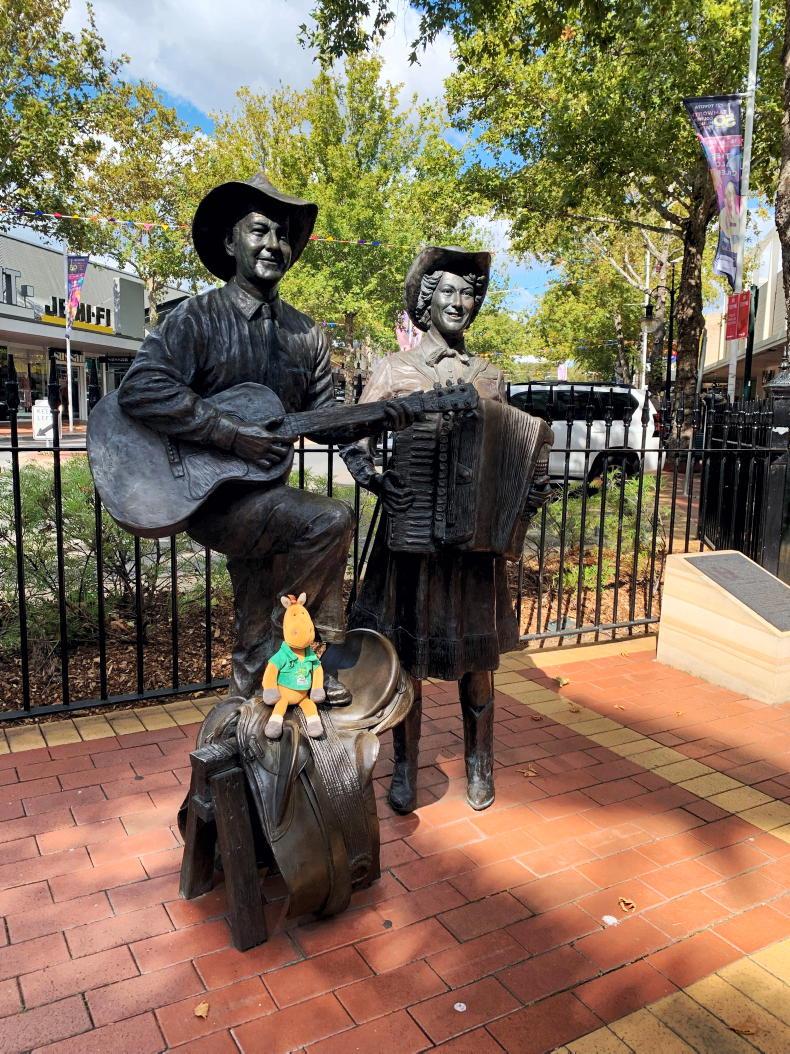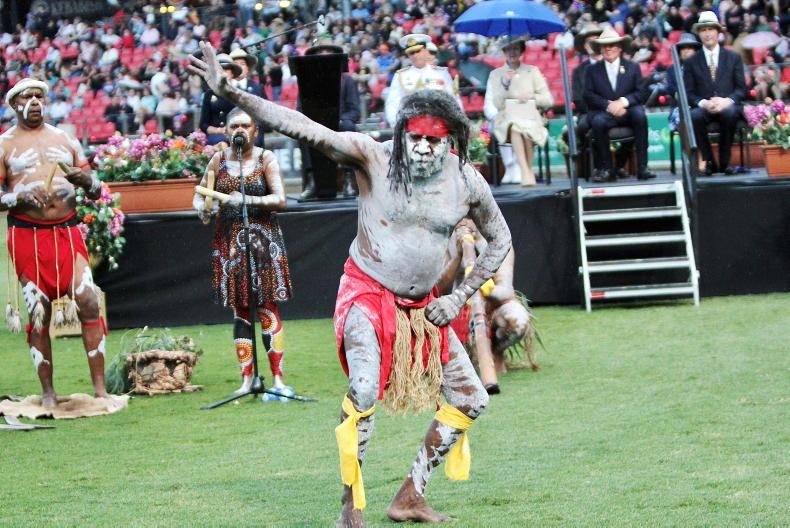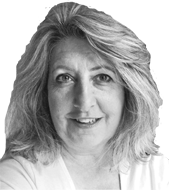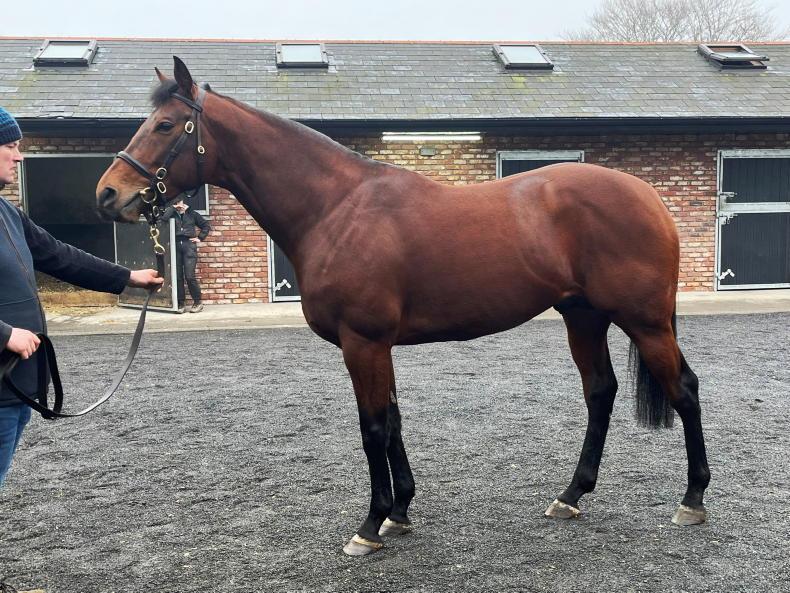THIRD time lucky. I was going to Australia. Luckily, before builders became scarcer than Chacco Blue straws, we’d done some house renovations and during that upheaval, a ‘trigger’ find was a national school project about Australia.
Glued to the front cover was a carefully-cut out picture of a koala bear and her cub. Inside this earnest little project were pages about the tonnes of iron ore and coal produced, sheep and cattle numbers, plus 101 other facts gleaned from an information pack the Australian Embassy had kindly posted to a third class pupil. No Google back then.
I’d wanted to go to Australia ever since and, finally, 2020 was to be the year. The first inkling of something amiss was an RTÉ news clip in January about throngs of Chinese travelling home for New Year celebrations in the midst of a mysterious virus. That was the first red flag about Easter travel plans to take in a visit to the Sydney Royal Easter Show.
By late January, the original itinerary of Muscat-Hong Kong-Sydney was swapped for a western route, via Los Angeles. By February, with Covid-19 spreading and scenes from barely-coping hospitals in Italy and Spain, even that option was put on hold.
As 2020 turned out, the Sydney Royal Easter Show was cancelled, airlines put their planes out to grass and we wondered when and if the world would get back to ‘normal’ again.
This year, in early February, Australia opened its borders to tourists. Flights booked. And then Russia invaded Ukraine. It took a proverbial gentle shove from sister Kate to stop dithering over whether it was a good time to travel to the other side of the world and to start packing for the bucket list trip.
One that included flying on the Qantas A380 and, even after a 15-hour flight, I bounded off their iconic double-decker plane like Skippy after a perfect flight. Blame too many living-vicariously episodes of Border Patrol during lockdown but the only disappointment at Sydney airport was no sightings of their canine unit in action!
Borrowing Wi-Fi in an airport coffee shop, I read Seamus Sloyan’s Breeders’ 10 feature, a reminder of all the sound travel advice offered by him and wife Aisling, who had spent their honeymoon touring Australia. Ex-Failte Ireland work colleague Eileen Mills had lived near Olympic Park; Paula Cullen was another with Sydney travel tips and Martine Hennessy, jockey Ellen’s mother, was the pathfinder for negotiating PCR test ‘windows’ and heap of Covid-19 paperwork needed to get into Australia.
Between these ‘Trip Advisors’ and of course the Higgins family, I had lots of sound advice to start with. An hour later, with the luggage dropped off at the nearby hotel, the train glided into Circular Quay station with its unforgettable view of Sydney Harbour Bridge and Opera House on the left-hand side.
Not only do Sydney trains have the wittiest socials in the virtual world but offer the best transport service of any city I’ve been to. The only glitch was no Wi-Fi - and the internet now makes travel oh-so simple - but even that proved to be a blessing in disguise as it meant less screen time on holidays.
Mascot, between the airport and one quick stop from the city centre, was my first Sydney base. And mascots also mean WEG Norman, a gift from the 2014 World Equestrian Games team in... where else? Normandy. The fun challenge to take photos of WEG Normans around the world - akin to scenes in the movies Amelie and Up In The Air - was readily accepted and a photo of ‘Irish Norman’ beside a surfboard during Easter Sunday’s visit to Bondi Beach has now been added to the album, which includes being photobombed by the Christ the Redeemer Statue in Rio de Janeiro and perched on the Great Wall of China.
Small worlds
I love travelling. Irma Kurtz’s superb The Great American Bus Ride is a favourite travel book, not least for the range of brought-to-life characters and extraordinary stories encountered and gathered on her Greyhound travels around the States.
The Sydney Royal Easter Show was not short of characters and coincidences galore either. Fascinated by Brahman and Zebu breeds - those lop-eared beef cattle originally imported to Australia from India - in the cattle barns, I was invited by one farmer to pull up a chair to learn more about them.
But the conversation also turned into how Australian beef farmers have battled drought, floods and competition from cheaper South American imports in recent years.
According to the Australian Bureau of Statistics (2020), the average age of a farmer is 57. This veteran topped that by a decade at least. “I love farming, I couldn’t think of any other life. But will my son and his generation stick it out?” he mused.
Aussies are a gregarious bunch. Shooting the breeze with fellow exhibitors, all perched on camp chairs and straw bales along the aisles, is one benefit of the Royal Easter Show pilgrimage.
And pilgrimage it is for many. An “I crossed the Simpson Desert’ bumper sticker on a jeep was an indication of the vastness and variety of Australian terrain.
Parramatta, 15 minutes west of the Olympic Park on a seamless transport network, was the next base where hotels were one-third the price of similar three-star Belfast and Dublin properties during shows. No price gouging there.
Writing two months ago about New York for the St. Patrick’s Day feature was a reminder about another coincidence. The prospect of trudging round the Civil War battlefield on a work trip to Gettysburg in March 1996 meant packing the trusty Drizabone. Not one Pennsylvania raindrop!
But, two days later in New York, it poured down. Another hotel guest in the taxi queue eyed up the waxed coat and enquired “Aussie?” It turned out he was the breeder of Regal Realm, Lucinda Green’s brilliant little horse.
But what was his name? In the bookcase is a dogeared copy of Regal Realm and right there in the intro: Sir Alec Creswick.
So, six weeks after speed-reading through the story of the ex-Australian stock horse that went on to be a world eventing champion, it was a penny-dropping conversation with John Bennett. The Easter Show’s Horse Committee chairman had mentioned in passing that his father was on the Australian eventing team at the Montreal Olympics and sold a horse (the one and only Regal Realm) to the UK eventing legend.
Another coincidence was discovering that there was a Pendle Hill, just west of Parramatta. The delightful Aussie behind the local Post Office counter provided a potted history of ‘Little Colombo’, this original cotton mill settlement that became home to generations of Maltese and Sri Lankan immigrants.

Tamworth was always on the cards. The home of Australian country music is also the site of the Waler Horse Monument and, located just after the Great Dividing Range, it was an opportunity to see more of New South Wales.
Less neon and much smaller than its American counterpart, Nashville - Tamworth’s population is just 40,000 - was a collection of Art Deco buildings, lots of family businesses and bakeries. Maybe it’s a throwback to so many British immigrants but bakeries, offering more cakes, scones, hot cross buns and custard slices than a Great British Bake Off episode, are big in Australia.
An amusing sight were Vinnies and Duffys shop signs on opposite sides of the street, a picture WhatsApped off to the Mayo namesake. Likewise, there was a Clover car wash sign adjacent to the Hill Street sign.
Scones and miners
Out of some 130,000 remount horses sent to Europe, the Middle East and North Africa during World War I, just one returned home. The Waler statue and another nearby memorial, to commemorate two and four-legged soldiers, stand in a park in the town centre.
Swatting the occasional mosquito away while waiting for the sunset-backlit photograph, the thought crossed my mind as childrens’ laughter drifted over from the park’s playground: that generation of ANZAC soldiers fought for future generations. The same situation as in the Ukraine.
Scone, like the exhibition in Sydney’s ANZAC Memorial, was another unexpected gem. Once the word filtered out about the trip, kind offers of hospitality and invitations to visit farms and meet four-legged Irish imports flooded in.
It would have taken the summer to do so and the first thing I’d resigned myself to was that a three-week trip would only scratch the surface of Australia but two days were swapped around for a flying visit to its ‘horse capital’: Scone.
The first sight on Day 1 in the Giants Stadium was an interview, shown on a gigantic TV screen, with Charlie Magnier. The 13-year-old had just won the first of three show jumping classes with Quinn Z and went on to be leading junior rider at the Easter Show.
Charlie’s mother Sophie, had also mentioned how Scone was the centre of the Australian bloodstock industry. And no better-named place to be than the Hunter Valley when the news of Noble Yeats’ Aintree Grand National win filtered through as he was bred by good friend and J1 summer travelling companion, Kristene Hunter.
Scone, one-10th of Tamworth’s population, lives and breeds horses. From the Thoroughbred Hotel to the Australian Stock Horse Society headquarters, the Scone Visitor & Horse Centre, horse themes festooning businesses and of course cafes selling, what else but scones, it was a well worth diversion.
Perth and Fremantle were tentatively pencilled in but Western Australia hadn’t reopened to tourists when I booked flights. Then came a green light for vaccinated tourists, however time and sky-high airfares during the Easter holidays were hurdles.
The ultimate bucket list trip would have included the Indian-Pacific railway journey but both its eyewatering price tag and a whopping 72 hours out of an already running-out-of-days itinerary ruled this out.
Then, the lightbulb moment of dropping the five-day American stopover on the way home and going to Perth instead the following week. One slim advantage of Covid is the flexibility of airlines and for the grand sum of 30 euros, the return flight dates were changed. Western Australia it was.
Perth… a handsome city but Fremantle, oh my. It was worth the rejigging to visit this port city with its handsome stone buildings, cobbled streets and lighthouses. A highlight was finding Finnerty Street, which I’d mischievously imagined was named after some convict ancestor made good.
Instead, the orange and lemon tree-lined street, turned out to be named after Strokestown-born Colonel Charles Finnerty, a member of the Lancashire Regiment who had fought in the Crimean War. Another reminder of history repeating itself.
Colours
Fremantle Arts Centre, on this street, was another find and thanks to its helpful staff member Amy, got an impromptu tour and colourful history lesson about the Gothic-style building’s many former guises, including a lunatic asylum, unmarried mothers’ home and WWII American naval base.
Subiaco, between the two cities, was the best surprise package of the lot. Rescue cats mingle amongst the cappuccino drinkers in Purrth Cafe and each Saturday, a fabulous farmers’ market takes place in the local school grounds.
On cue, the opening chords of A Horse With No Name were being played by the SUFFA (Subiaco Ukelele, Free-For-All) group that gathers at this market each Saturday morning for an informal get-together.
And then there was meeting Turloughmore native Tommy Costello and his wife Lena (last week’s Pony Tales story) who also live in this Perth suburb.
I’d thought that Albany, the good show horse owned by Lena’s late brother Miceál Higgins, was named after the New York State capital. Instead the Actinium gelding’s name was a nod to the Western Australian seaport 260 miles from Perth, visited by the Coshla family during their visit to the Costellos.
At the Australian Stock Horse Society headquarters in Scone, its registrar Susie O’Brien had mentioned that many of the WWI remounts were shipped from Albany. Filed for another future trip, along with Bendigo, Broken Hill, Wagga Wagga and 100 other possibilities.

Aboriginal performers at the official opening the Sydney Royal Easter Show bicentenary \ Susan Finnerty
Back to Sydney for the return flight home and the unusual sight of dozens of hi-vis jacket-wearing miners, waiting at various boarding gates for the commute to Christmas Creek, Iron Bridge, West Angelas and Solomon to work in the coal and iron mines.
Travel doesn’t ‘just’ broaden the mind, it fills it with a thousand memories.
From the sudden monsoon downfall as four Aboriginal performers played music during the Sydney Royal Easter Show’s bicentenary official opening, the pride on the faces of the young riders at the RDS display in front of the Princess Royal, the glow of a bushfire and plumes of smoke still visible at 36,000 feet on the Sydney-Perth flight, the ANZAC Memorial Day march in Fremantle, the first glimpse of the horseshoe-shaped Bondi Beach, walking the Sydney Harbour Bridge to a final aerial view of it when the obliging Qantas pilot converted the A380 into an aerial tour bus by banking over Sydney Harbour on the return flight ... just a fraction of the Australian memories.
And the colours; from the navy blue Indian Ocean, blood orange-coloured sunrises on dawn flights, the fluorescent yellow glow of the miners’ jackets; sun-scorched red plains, silvery eucalyptus trees and the golden sands at Bondi beach.
United Airline’s Newark-Shannon flight was two hours late, followed by a wait among American tourists, anxious to tee off that afternoon, for the luggage and golf clubs to appear. First World stuff as sitting in the same row on the flight was an Irish man, now living on America’s west coast, travelling home 12 months later for his late sister’s memorial service. “I never want to see another funeral on Zoom again,” he said bleakly.
Perspective in a world gone mad.


 This is a subscriber-only article
This is a subscriber-only article
 It looks like you're browsing in private mode
It looks like you're browsing in private mode











SHARING OPTIONS: